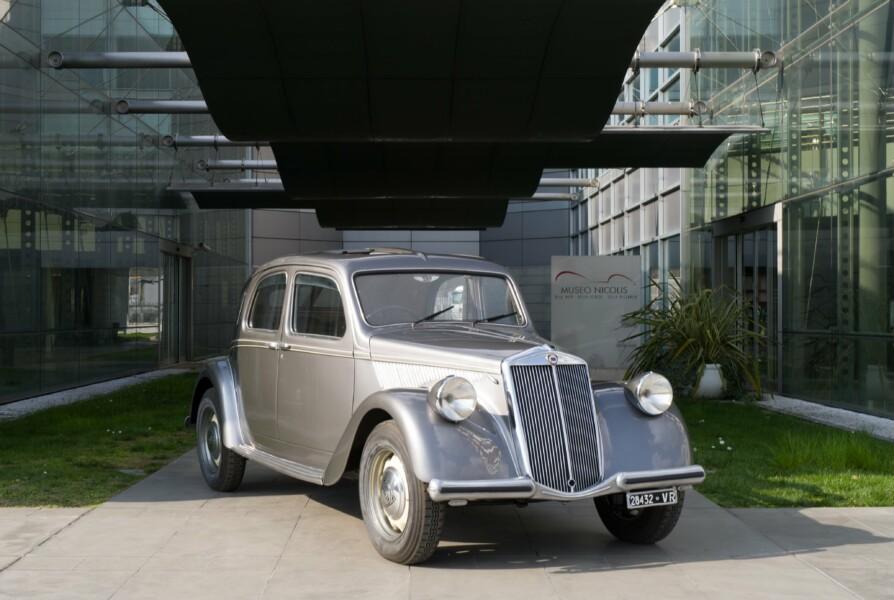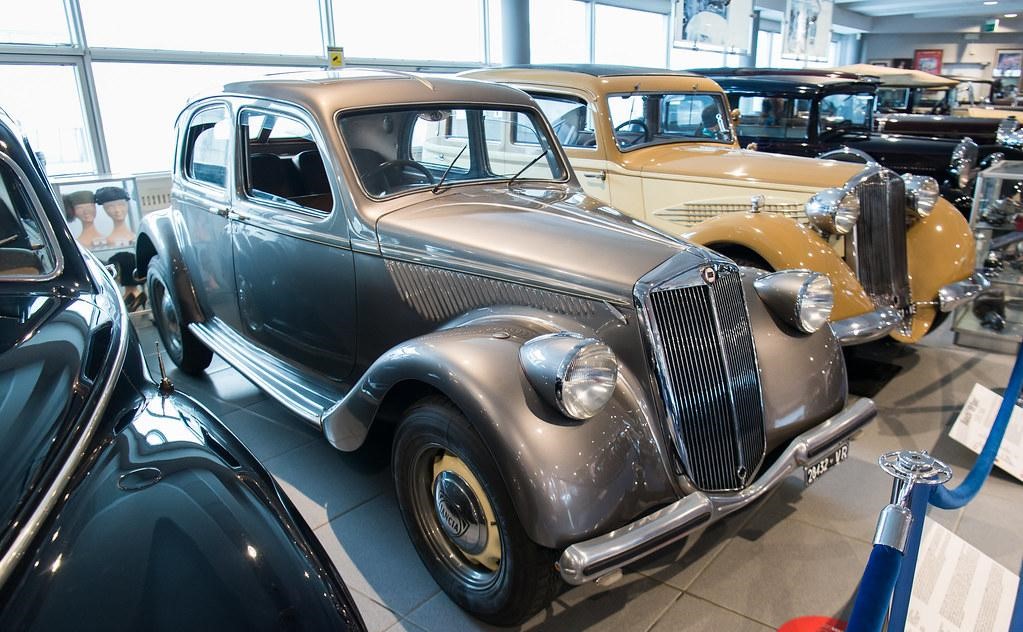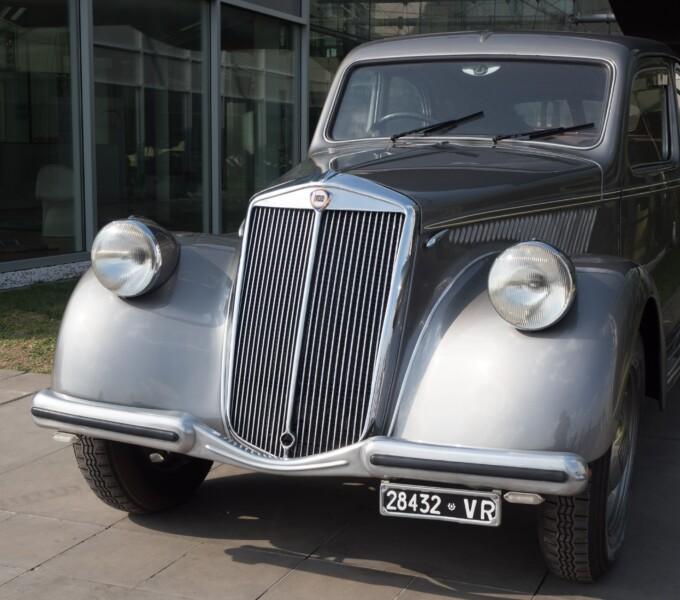1942 Lancia Aprilia 1500 II Serie berlina

The descriptions of the Classic Cars in the Directory were partly generated or supplemented with the help of artificial intelligence (AI). The content may occasionally not always be entirely accurate or factually correct despite careful checking.
The Lancia Aprilia 1500 II Serie berlina 1942 is a rare and iconic vehicle from the Lancia brand. As a true representation of Italian craftsmanship, this classic car boasts a range of technical features that were revolutionary for the early 1940s.
At the forefront of this car's technical advancements is its unitary body construction. Unlike traditional automobiles of the era that relied on a separate chassis and body, the Lancia Aprilia 1500 II Serie berlina combined these two elements into a single structure. This not only reduced weight and improved handling, but also facilitated a more aerodynamic design.
Powering the Lancia Aprilia 1500 II Serie berlina is a horizontally opposed four-cylinder engine that delivers 48 horsepower. Don't let the seemingly modest output fool you - this engine is incredibly smooth and refined, with excellent power delivery throughout the rev range. The engine is mated to a four-speed manual transmission that offers precise and quick shifts.
The suspension system on the Lancia Aprilia 1500 II Serie berlina is another technical highlight. The front suspension is comprised of independent wishbones and a transverse leaf spring, while the rear uses a De Dion system with a transverse leaf spring. This combination provides a rare blend of comfort and handling that is hard to replicate in modern cars.
Another standout feature of the Lancia Aprilia 1500 II Serie berlina is its hydraulic brakes. Unlike most cars of the era that relied on mechanical brakes, the Lancia Aprilia 1500 II Serie berlina uses a hydraulic system that is incredibly effective at bringing this car to a stop. This was a major technological advancement that enhanced safety and driver confidence.
Inside the Lancia Aprilia 1500 II Serie berlina, you'll find a range of luxurious features that were uncommon for the time. The dashboard is simple yet elegant, with clear gauges and an easy-to-use radio. The seats are comfortable and supportive, with ample legroom for both the driver and passengers.
Overall, the Lancia Aprilia 1500 II Serie berlina is a marvel of engineering that combines technical innovation with timeless design. Its unitary body construction, horizontally opposed engine, advanced suspension system, and hydraulic brakes all contribute to a driving experience that is both thrilling and refined. It's no wonder that the Lancia Aprilia 1500 II Serie berlina remains a beloved classic to this day.
Milestones
- In 1937, Lancia, an Italian car manufacturer, introduced the Aprilia model as a mid-sized luxury car. - In 1942, Lancia released the Aprilia 1500 II Serie berlina, which was an updated version of the earlier Aprilia model. - The Aprilia 1500 II Serie berlina was powered by a 1.5L V4 engine that produced 48 horsepower. - It had a top speed of 105 km/h and was capable of accelerating from 0 to 100 km/h in 22 seconds. - The car featured a streamlined design that improved its aerodynamics and fuel efficiency. - It had a four-speed manual transmission and was equipped with hydraulic brakes. - During World War II, production of the Aprilia 1500 II Serie berlina was limited due to wartime restrictions. - After the war, production resumed and the Aprilia 1500 II Serie berlina remained in production until 1949. - The Aprilia 1500 II Serie berlina was well-regarded for its advanced engineering and performance, earning it a reputation as a driver's car.Technical
- Production year: 1942 - Body type: Berlina sedan - Engine: V4, 1.5-liter displacement - Power output: 48 horsepower at 4,200 rpm - Transmission: Four-speed manual - Suspension: Independent front, live rear axle with leaf springs - Brakes: Four-wheel hydraulic drum brakes - Steering: Worm and sector - Dimensions (mm): 4,410 length x 1,620 width x 1,540 height - Wheelbase: 2,560 mm - Curb weight: 1,000 kg - Top speed: Approx. 130 km/h - Fuel consumption: Approx. 11.5 liters per 100 km - Production numbers: Approx. 6,500 units of the II Serie were produced before production was halted due to World War II.



